Table of Contents
The funniest piece of trivia about the Mercedes-Benz Sprinter is that it’s built in Europe, but then partially disassembled and the pieces are sent to America in separate cargo ships, and then it’s reassembled in a special Mercedes-Benz plant in North Charleston, South Carolina.
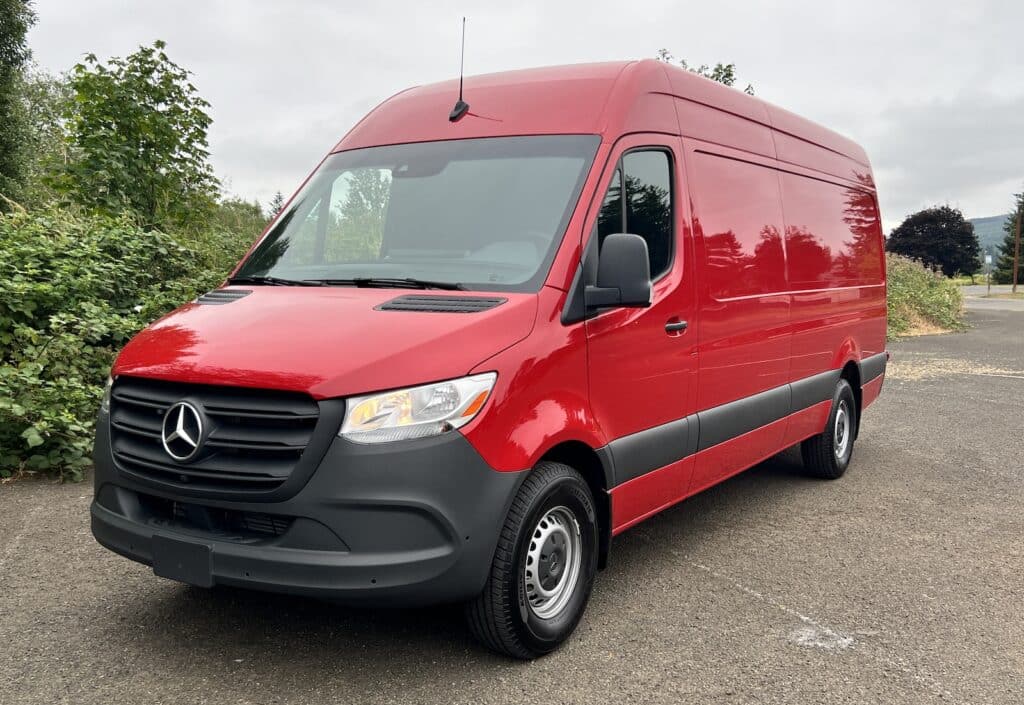
They do this to avoid paying the “chicken tax,” which is a 25% tariff on imported trucks. The tax was imposed in 1964 in retaliation for European tariffs on, you guessed it, American chicken. So here we are 57 years later, reassembling cargo vans because no one will lift the tariff.
But that’s not really what’s important about the Sprinter. The fact is, these versatile vans by Mercedes-Benz, and their counterparts from several other automakers, are gaining a devoted following not only among commercial users, but also by regular consumers who find the vans more useful and affordable than the Great American Pickup Truck.
Overview
The Sprinter is a body-on-frame front-engine, rear-drive or all-wheel-drive working van. The chassis is available in a shorter 144-inch or longer 170-inch wheelbase, and the body is available in both low and high roof varieties. Mercedes-Benz outfits the Sprinter with the buyer’s choice of 4- or 6-cylinder turbo-diesels or a turbocharged 4-cylinder gasoline engine.
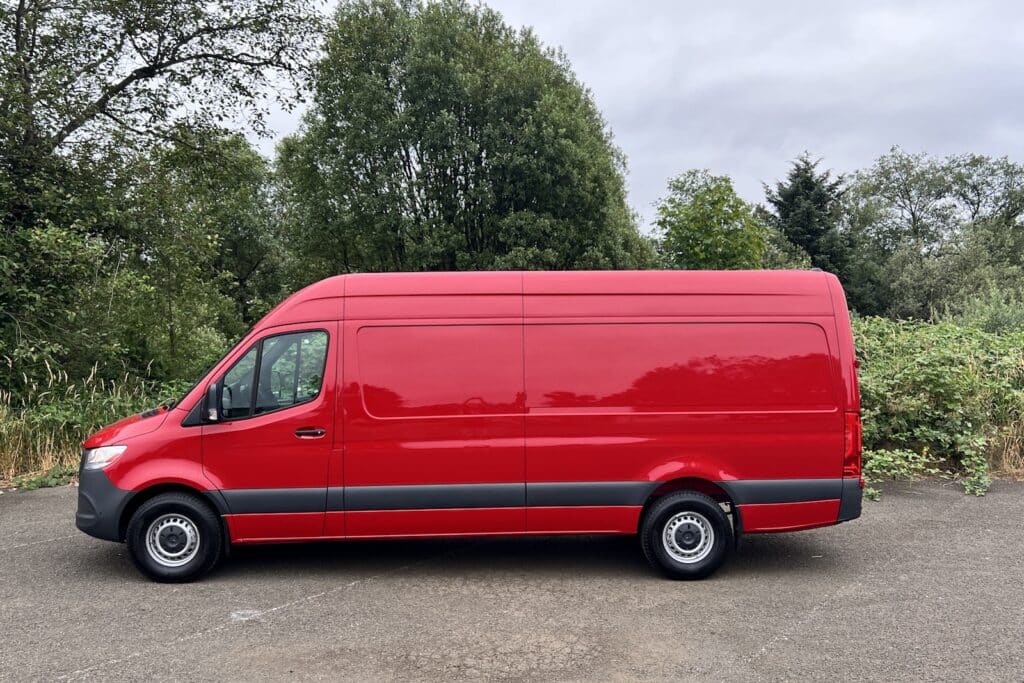
More importantly, the Sprinter comes as a two-seat cargo van, a two-row, five-seat Crew van, a passenger van with seats for 12 or 15 people, and as a two-seat cab chassis with a bare frame behind the driver’s cabin.
Buyers can also choose the chassis and suspension to meet their needs. The Cargo Van 1500 has a lighter payload than the 2500, 3500, 3500XD and 4500 vans. There’s a somewhat complicated table of payloads based on the chassis and engine/driveline choices, but the minimum payload is 3,953 pounds, and the maximum is 7,484 pounds.
The other thing to know about the Sprinter (or any comparable van) is that there are “Upfitters” who have pre-designed installations to customize the van as anything from a luxury motor home to a mobile machine shop. Virtually any commercial or personal application has already been solved and standardized.
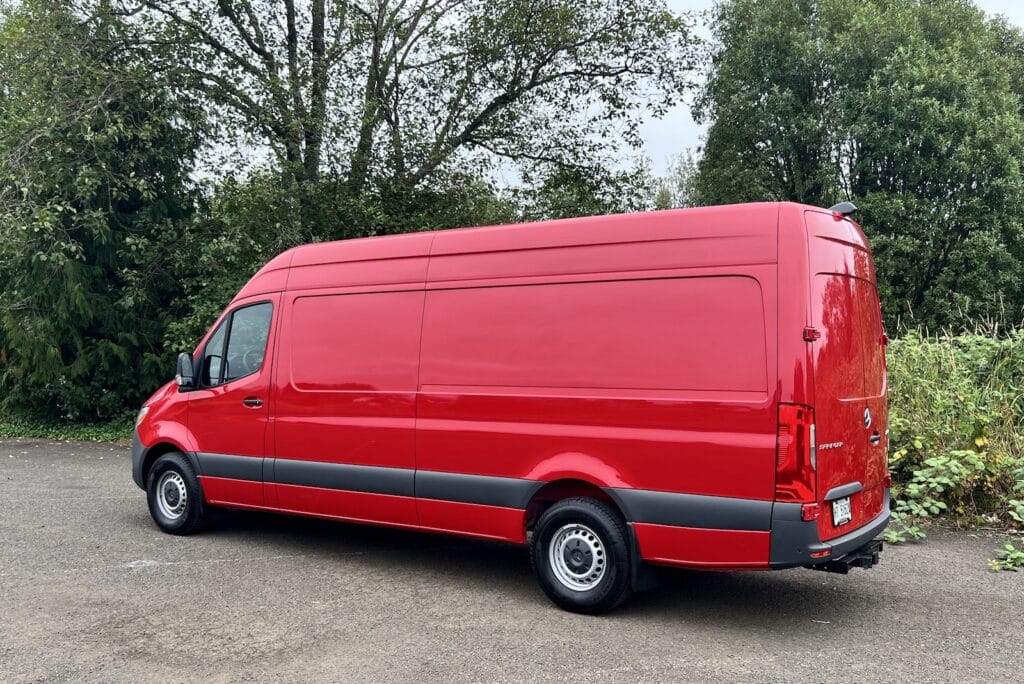
Exterior
No one would ever call a Sprinter graceful or beautiful. It’s a brick, honestly. Flat top, flat sides and a little bit of front-end styling. But that’s not why you buy a van, is it? The Sprinter comes with a big sliding side door and a pair of barn-door rear doors that swing wide to get out of your way. The driver and passenger doors are tall, allowing easy access as you step up into the cabin.
One more thing: the stubby, steeply sloping nose of the Sprinter offers excellent visibility.
Interior
Here’s where we get into my personal preference. I love the no-nonsense and durable interior of the Sprinter cargo van driver’s cabin. You get a firm, comfortable seat trimmed in leatherette upholstery and an easy-to-clean vinyl floor.
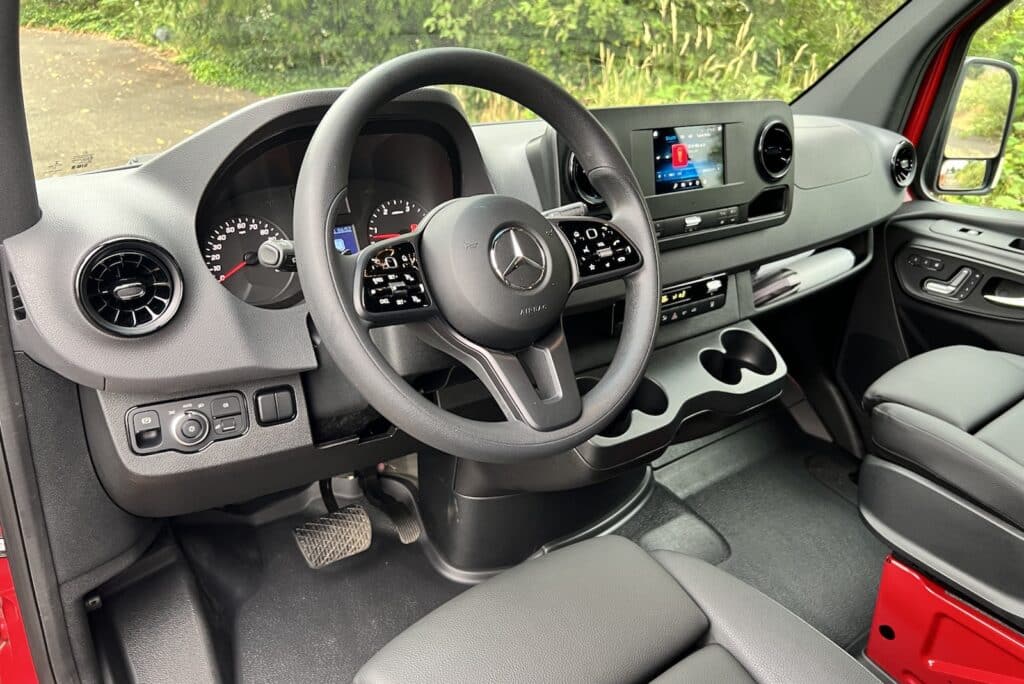
The steering wheel and all components are built to last, and it’s Mercedes-Benz so they know what they’re doing. However, the steering wheel comes straight out of Mercedes’ SUVs, so it’s got all the controls. There’s a lot of hard plastic, but in a pinch, you could clean this cabin with scrub brush and a bucket. One anomaly is the Mercedes-Benz power seat adjustment that uses the little model seat controls on the door, just like an E-Class.
Powertrain
As we mentioned, there are two diesel options: a 2.0-liter turbo 4-cylinder and a 3.0-liter turbocharged V-6. The 4-cylinder diesel gives you 161 horsepower and 325 pound-feet of torque, passed through a 7-speed automatic transmission. The V-6 doesn’t give you a lot more, with 188 hp and the same 325 lb-ft of torque as the smaller diesel, and the same 7-speed gearbox. However, the V-6 diesel is the only option that offers all-wheel drive.
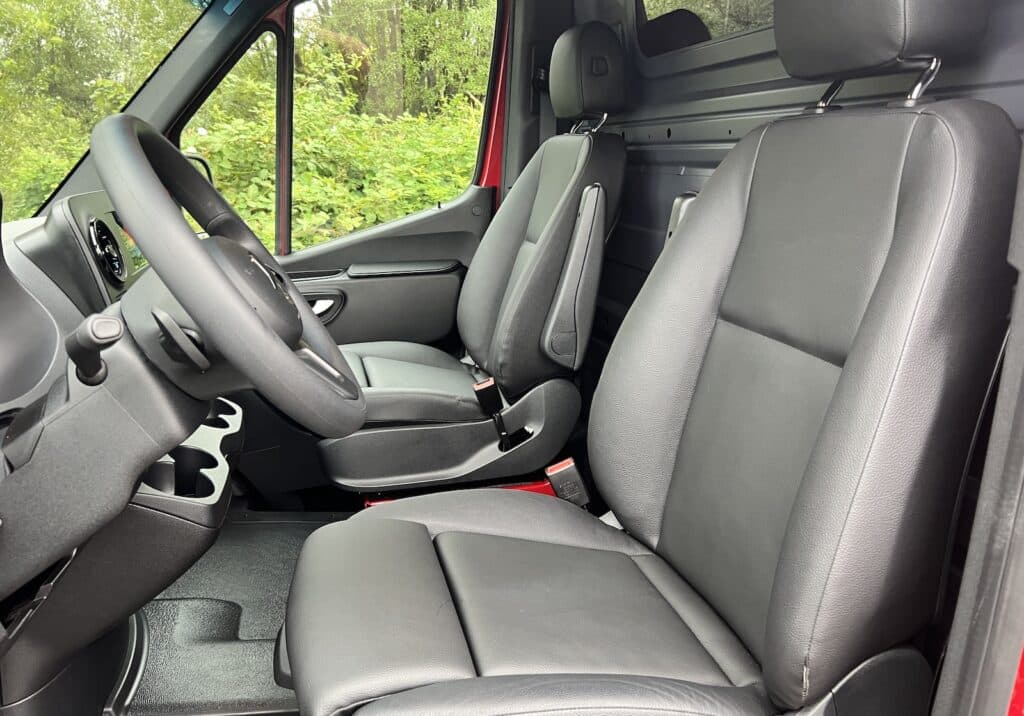
The gasoline engine option offers the same 188 hp as the V-6, but only 258 lb-ft of torque, but passed through a 9-speed automatic.
Towing is rated at 5,000 to 7,500 pounds, depending on the specific model. The 2500 we tested is good for 5,000 pounds, but you can buy the 3500 or 4500 models and tow up to 7,500 pounds with either diesel engine option.
Safety and Technology
Vans like the Sprinter are not subject to the same tests as passenger cars, so they are not rated by the National Highway Traffic Safety Administration or the Insurance Institute for Highway Safety.
However, the Sprinter comes with the usual standard safety features, plus a load-adaptive electronic stability system and crosswind assistance. This is important because anyone who drives a lot of payload can tell you that any vehicle handles differently with a couple of tons in the back, and anyone with a big, tall van can assure that a sudden crosswind can push your van into the next lane, or worse.
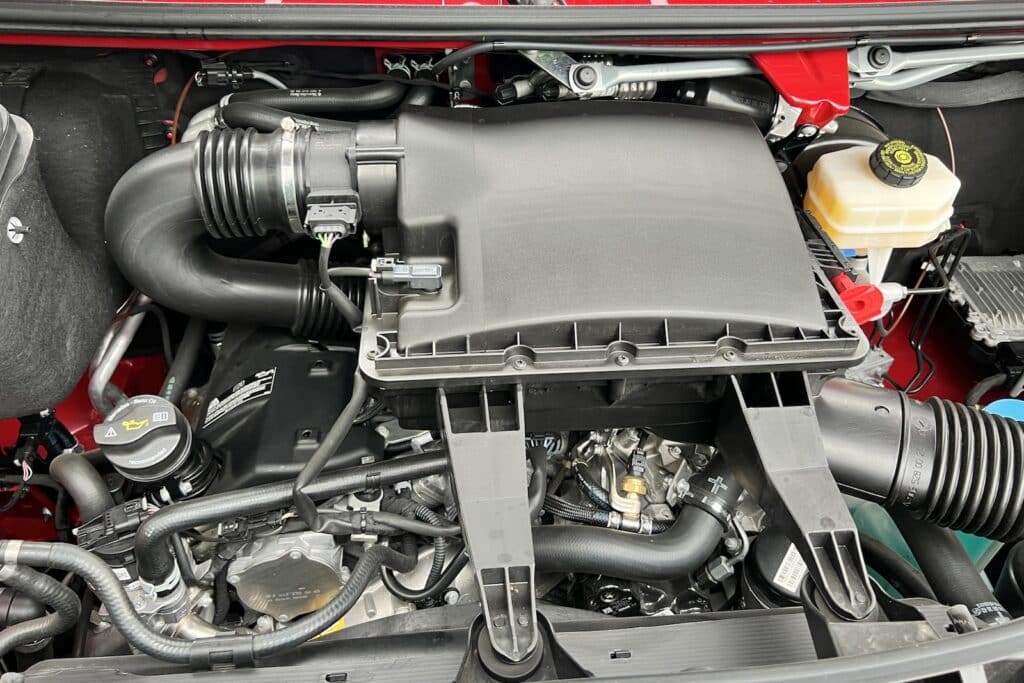
There’s also a long list of optional safety you can add onto your van. Adaptive cruise control, blind spot monitor, a 360-degree camera, lane-keeping and parking assistance are all available.
On the technology side, things are slim by modern standards. There’s no option for a 14-inch tablet-style infotainment system. You can have a 7-inch or a 10.25-inch screen with navigation and support for Apple and Android phone integration. Best of all, Mercedes has implemented its Mercedes-Benz User Experience (MBUX) advanced voice control system to the Sprinter.
Driving Impressions
The amazing thing about the Sprinter is how well it drives. The long-wheelbase, high-roof, V-6 diesel, rear-drive cargo van we tested weighs in at 4,916 pounds, so it rides over bumps with surprising smoothness. Road noise is about what you expect; a bit boomy from the big rear cargo area, but that would probably get quiet if you packed a bunch of stuff back there.
And packing the stuff is what sets these vans apart. In the cargo van we tested, you could probably fit all the furniture and personal possessions from a one-bedroom apartment. You could carry about six to 10 refrigerators, or enough drywall to remodel a small house. The best part is that it would all stay secure, dry and low to the ground. Unlike pickup trucks, the floor height in a Sprinter is low at 27.5 inches, and you don’t have to lift things past the tailgate.
Driving a high roof van, you really would want to be cautious about taking curves too fast, especially with a lot of weight in the back. But if you are used to driving vans, box trucks or RVs, getting behind the wheel of a Sprinter will be easy. The comfortable and functional Mercedes-Benz interior also helps you drive well. Our cargo van had no rear windows of any kind, but the side mirrors are large and well-adapted to filling in the blind spots. If you have to drive a big van, this is about as good as it gets.
2022 Mercedes Sprinter 2500 Cargo van Specifications
| Dimension | L: 274.3 inches/W: 79.5 inches/H: 107.3 inches/Wheelbase: 170 inches |
| Weight | 4,916 pounds |
| Powertrain | 3.0-liter turbocharged 6-cylinder diesel; 7-speed automatic transmission |
| Fuel Economy | 22 mpg city/24 mpg highway/23 mpg combined |
| Performance Specs | 188 horsepower and 325 pound-feet of torque |
| Price | Base price: $50,660; As tested: $58,097 including $1,695 destination charge. |
| On-Sale Date | Available now |
Wrap Up
As tested, our 2022 Sprinter 2500 Cargo Van starts at $50,660. With a long list of individual options and a couple packages, the total retail price comes to $58,097.
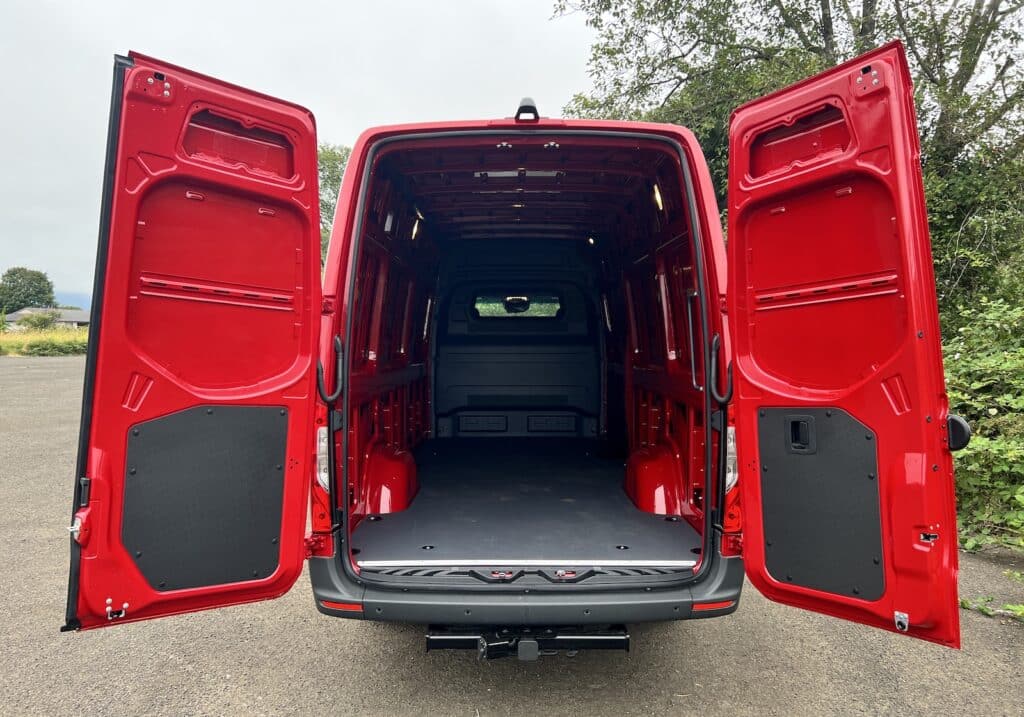
It’s tough to recommend a particular trim level or body style with the Sprinter, because that’s really going to depend on what you want to do with it. As we mentioned at the start, these vans are becoming popular for everyday use, so the Crew cabin with its second-row seat and some side windows is probably a good choice for non-commercial use. But as they say, your mileage may vary and there are so many options that the best thing you can do is play with the online configurator at www.mbvans.com.
Speaking of mileage, as commercial vehicles the EPA doesn’t rate the Sprinter. But you can expect about 22 mpg in the city and 24 mpg on the highway, or a little better if you get a smaller version than we had.
One last thing to note: Mercedes-Benz has already announced that the 2023 Sprinters will not have a V-6 option. There will be a 4-cylinder gas engine and a 4-cylinder diesel, and all vans will have a 9-speed automatic transmission and a new all-wheel-drive system. So if you want a V-6, act now.
2022 Mercedes Sprinter 2500 Cargo van — Frequently Asked Questions
Is there a shortage of Mercedes-Benz Sprinter vans?
Yes, Mercedes-Benz is suffering from the same supply chain issues as every automaker, so Sprinter supplies are down while demand is rising. Mercedes specifically warns that not all features may be available due to the worldwide semiconductor chip shortage.
Are Sprinters reliable?
Yes. Mercedes-Benz has been building commercial vehicles since the 1880s. These vans are built for the entire world and use proven engines, drivelines, and construction. They also don’t change much year to year.
How long will a Sprinter van last?
Properly maintained, it’s not unusual to find Sprinter vans with more than 300,000 miles on them, still in service, and some have exceeded 450,000 miles.





More Stories
Lewis Hamilton Shows Off New Helmet for Monaco GP by Daniel Arsham
Son parte de Star Wars los dos VW ID. Buzz muy especiales, e inspirados en “Obi-Wan Kenobi”
2022 Audi Q5 Sportback Review: Rounding out the top